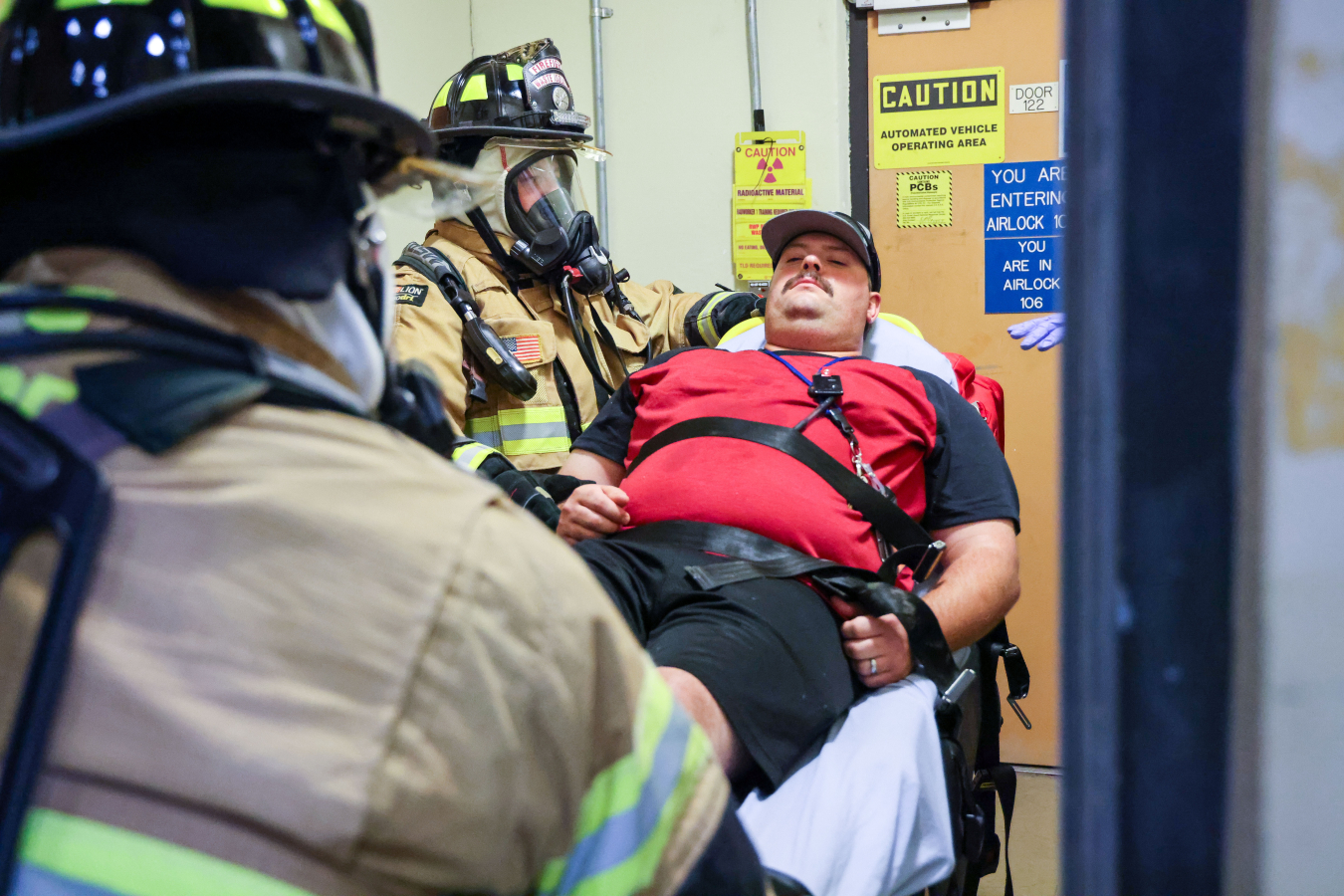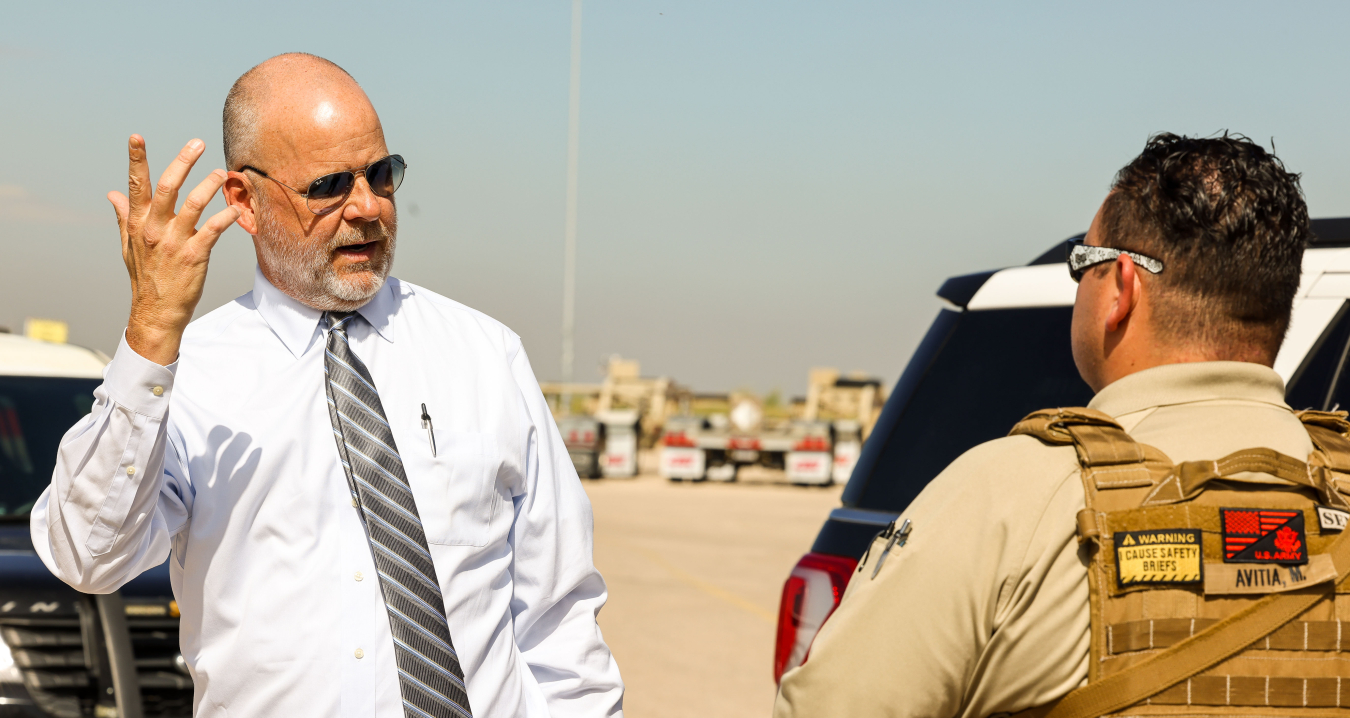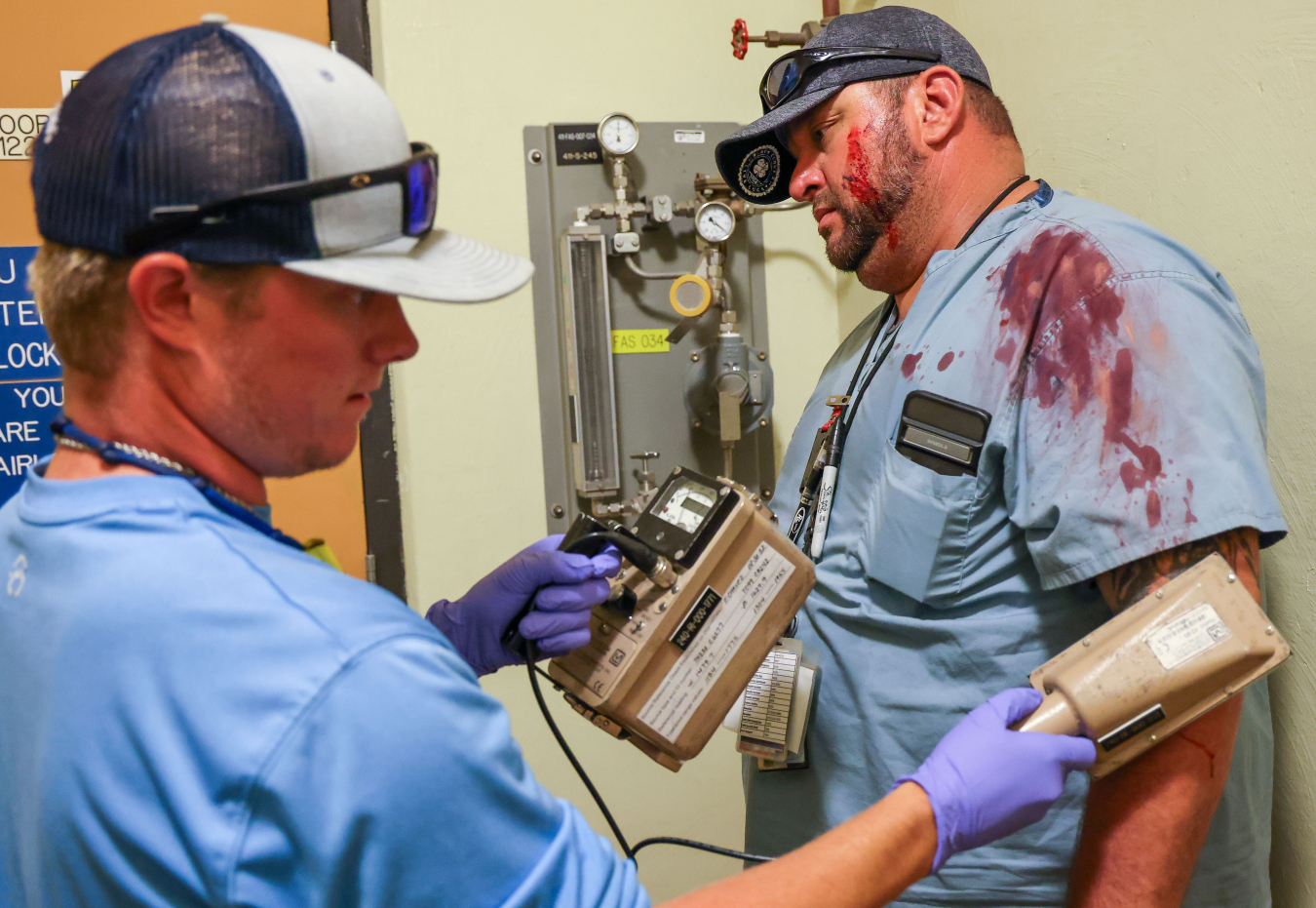Consider the following heart-pounding scenario hundreds of employees responded to as part of the EM Waste Isolation Pilot Plant’s (WIPP) recent annual emergency exercise.
Office of Environmental Management
October 4, 2022
Waste Isolation Pilot Plant (WIPP) firefighters and paramedics Jesse Solano, left, and Jakoda Mathews prepare to transport Nick Thompson, who portrays a victim, from the WIPP waste handling building to a waiting ambulance during a mock event as part of an annual emergency training exercise.
CARLSBAD, N.M. – Consider the following heart-pounding scenario hundreds of employees responded to as part of the EM Waste Isolation Pilot Plant’s (WIPP) recent annual emergency exercise:
A plane crashes at the WIPP site, bursting into flame and igniting a wildland grass fire. One of the plane’s engines smashes through the security fence and on through the wall of the waste handling building. Barrels of waste burst open, spreading contamination, and a waste handler is injured and contaminated.
In addition to dozens of drills throughout the year, the graded exercise ensures WIPP personnel are prepared to respond in an actual emergency.
In the training scenario, operators in WIPP’s Central Monitoring Room, with their hands suddenly extremely full, assess the multiple situations and start to dispatch WIPP personnel. The incident commander puts a call out for mutual aid from Carlsbad and Hobbs emergency medical services to assist with the “injured” victims, and Eddy County Fire and Rescue to assist with the crash fire.

At the Waste Isolation Pilot Plant site, an insistent media member with the fake name of Chris Taylor was played by Brett Hansard, manager of the risk communication and management program at DOE’s Argonne National Laboratory. He bothered security as he tried to get more information about the incident portrayed in the emergency exercise.
Site personnel are directed to stay indoors, and office wardens begin the task or accounting for personnel in their areas. Underground personnel, 2,150 feet below the surface in WIPP’s repository, go to their assembly areas to await further instruction as radiological control technicians take readings on the surface.
Employees at the WIPP site and the Skeen Whitlock Building in Carlsbad participated in the simulated event. In Carlsbad, 26 miles west of the WIPP site, the Emergency Operations Center (EOC) was staffed and activated, and the adjacent Joint Information Center (JIC) began to field mock calls from the anxious public and media. The EOC worked with the facility shift manager at the site for an evacuation of nonessential personnel by bus.
An insistent media member played by Brett Hansard, manager of the risk communication and management program at DOE’s Argonne National Laboratory, pestered security personnel at the WIPP site, trying to get more information. Hansard used the name Chris Taylor in the scenario.

Whew!
“The complexity was designed to test response efforts from multiple emergency response organizations, such as the Central Monitoring Room, Emergency Operations Center, Joint Information Center, WIPP fire and security departments, and outside agencies. The result was an exercise that challenged coordination and response efforts across the board,” said John Sanford, emergency management manager for WIPP maintenance and operations contractor Nuclear Waste Partnership.
The event took months to plan.
“The WIPP full-scale exercise was the result of a joint planning effort from multiple WIPP personnel and departments, as well as our mutual aid partners,” Sanford said. “While there were a few opportunities for improvements identified, the exercise was an overall success. WIPP Emergency Management wishes to thank all of the organizations that participated and supported the exercise from planning to execution, including mutual aid organizations and agencies.”
To receive the latest news and updates about the Office of Environmental Management, submit your e-mail address.

